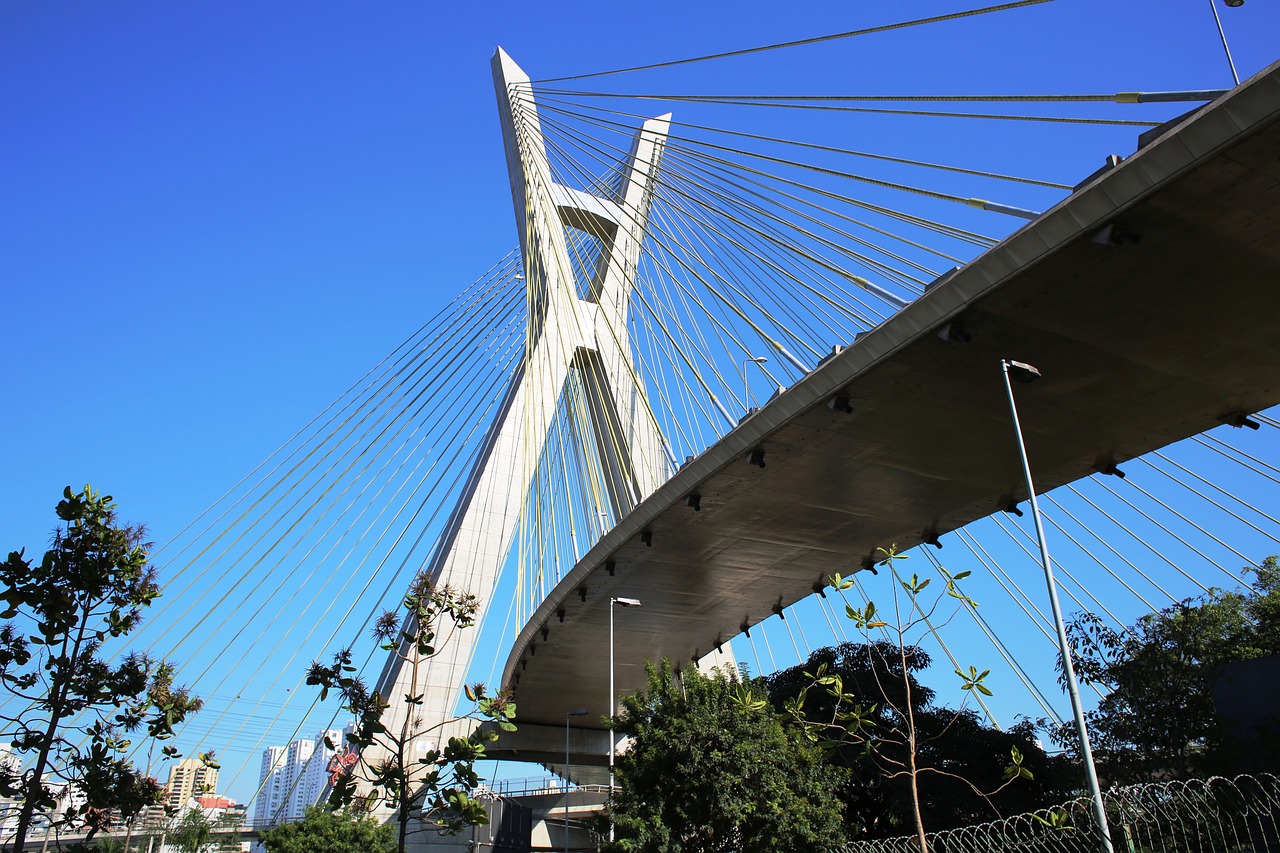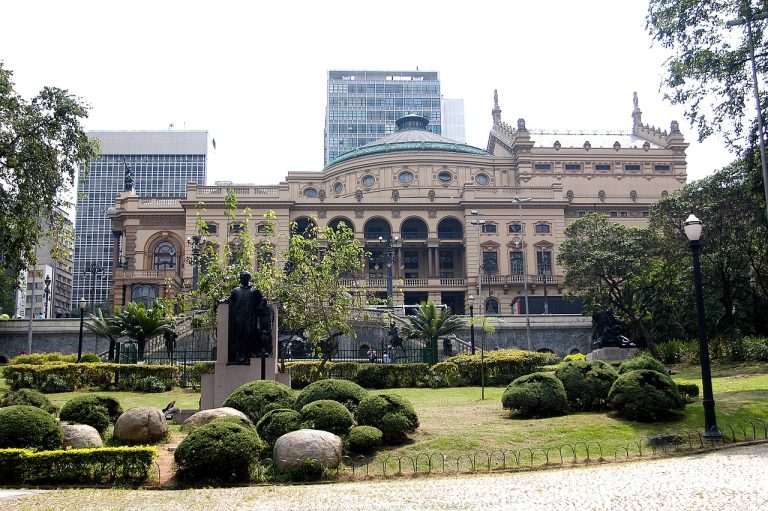São Paulo Brazil Video
Architectural Wonders: Iconic Buildings in São Paulo Brazil
São Paulo, the largest city in Brazil, is known for its vibrant culture, bustling streets, and impressive architecture. The city boasts a rich architectural heritage, with iconic buildings that showcase a variety of architectural styles. From modern skyscrapers to historic landmarks, São Paulo offers a visual feast for architecture enthusiasts. In this article, we will explore some of the most notable architectural wonders in São Paulo Brazil.
São Paulo Brazil Image 1: 
1. Edifício Itália
Edifício Itália is a towering skyscraper located in the heart of São Paulo. Designed by architect Franz Heep, this iconic building stands at a height of 168 meters and offers panoramic views of the city. Completed in 1965, Edifício Itália is known for its distinctive circular shape and elegant design. It houses a variety of businesses, including restaurants, offices, and a hotel. The observation deck on the top floor provides visitors with breathtaking views of São Paulo’s skyline.
Keywords: Edifício Itália, skyscraper, Franz Heep, circular shape, panoramic views
- Impressive Height: Edifício Itália stands at an impressive height of 168 meters, making it one of the tallest buildings in São Paulo.
- Circular Design: The building’s unique circular shape sets it apart from other skyscrapers in the city. Its sleek and modern design is a testament to the architectural prowess of Franz Heep.
- Observation Deck: The top floor of Edifício Itália features an observation deck that offers stunning panoramic views of São Paulo. Visitors can enjoy breathtaking vistas of the city’s skyline.
- Multi-purpose Building: Edifício Itália houses various businesses, including restaurants, offices, and a hotel. It serves as a hub of activity in the heart of São Paulo.
2. Theatro Municipal
Theatro Municipal is a magnificent opera house located in the city center of São Paulo. Designed by Italian architect Cláudio Rossi, it was inaugurated in 1911 and is considered one of the most important cultural landmarks in Brazil. The building showcases a blend of architectural styles, including Art Nouveau and Renaissance Revival. The interior of Theatro Municipal is equally impressive, featuring ornate decorations, intricate frescoes, and a stunning chandelier.
Keywords: Theatro Municipal, opera house, Cláudio Rossi, cultural landmark, Art Nouveau, Renaissance Revival
- Architectural Gem: Theatro Municipal is an architectural gem that reflects the grandeur and opulence of the early 20th century. Its stunning facade and intricate details make it a must-visit attraction in São Paulo.
- Cultural Landmark: The opera house is a symbol of São Paulo’s rich cultural heritage. It hosts a variety of performances, including operas, ballets, and concerts, attracting both locals and tourists alike.
- Architectural Styles: The building combines elements of Art Nouveau and Renaissance Revival architecture, creating a unique and visually captivating aesthetic.
- Interior Splendor: The interior of Theatro Municipal is adorned with ornate decorations, exquisite frescoes, and a magnificent chandelier. It offers a glimpse into the city’s artistic and cultural past.
São Paulo Brazil Image 2: 
3. Copan Building
The Copan Building is an iconic residential building located in the heart of São Paulo’s downtown area. Designed by renowned Brazilian architect Oscar Niemeyer, it is considered one of his most significant works. Completed in 1966, the building features a unique S-shaped design and stands at a height of 140 meters. It houses residential apartments, offices, restaurants, and shops, making it a vibrant and bustling space.
Keywords: Copan Building, Oscar Niemeyer, residential building, S-shaped design, vibrant space
- Architectural Marvel: The Copan Building is hailed as an architectural marvel and a testament to Oscar Niemeyer’s innovative design approach. Its S-shaped structure is both visually striking and functional.
- Residential and Commercial Hub: The building is a mixed-use development, offering residential apartments, offices, restaurants, and shops. It has become a vibrant and dynamic space within São Paulo’s urban fabric.
- Curved Design: The S-shaped design of the Copan Building creates a sense of movement and fluidity. It stands out amidst the city’s skyline, attracting visitors and admirers of modern architecture.
- Community Atmosphere: With its diverse range of amenities and services, the Copan Building fosters a sense of community among its residents and visitors. It has become a symbol of urban living in São Paulo.
4. São Paulo Museum of Art (MASP)
The São Paulo Museum of Art, commonly known as MASP, is a cultural institution that houses an extensive collection of artworks. Designed by Italian-Brazilian architect Lina Bo Bardi, the museum is renowned for its bold architectural style. Completed in 1968, MASP features a suspended structure supported by concrete beams, creating a sense of openness and transparency. The museum’s collection includes works by renowned artists such as Van Gogh, Picasso, and Rembrandt.
Keywords: São Paulo Museum of Art, MASP, Lina Bo Bardi, cultural institution, suspended structure
- Architectural Innovation: MASP is celebrated for its innovative architectural design. The museum’s suspended structure, supported by concrete beams, challenges traditional notions of museum architecture.
- Openness and Transparency: The suspended structure creates a sense of openness and transparency, allowing visitors to engage with the artworks in a unique and immersive way.
- Artistic Masterpieces: MASP houses an impressive collection of artworks from various periods and styles. Visitors can admire masterpieces by renowned artists, including Van Gogh, Picasso, and Rembrandt.
- Cultural Hub: The museum serves as a cultural hub in São Paulo, hosting temporary exhibitions, educational programs, and cultural events. It plays a vital role in promoting art and culture in the city.
São Paulo Brazil Image 3: 
5. Ibirapuera Auditorium
Designed by famous Brazilian architect Oscar Niemeyer, the Ibirapuera Auditorium is a striking architectural masterpiece located in Ibirapuera Park. Completed in 2005, the auditorium’s design is characterized by its curved roof and unique shape, resembling a spaceship. It serves as a venue for concerts, theater performances, and other cultural events. The interior of the auditorium features excellent acoustics, ensuring an immersive and memorable experience for the audience.
Keywords: Ibirapuera Auditorium, Oscar Niemeyer, architectural masterpiece, curved roof, cultural events
- Futuristic Design: The Ibirapuera Auditorium stands out for its futuristic design, reminiscent of a spaceship. Oscar Niemeyer’s avant-garde approach to architecture is evident in its unique shape and curved roof.
- Cultural Venue: The auditorium serves as a cultural hub, hosting a wide range of events, including concerts, theater performances, and conferences. It attracts both local and international artists.
- Superior Acoustics: The interior of the auditorium is designed to provide excellent acoustics, ensuring an immersive and high-quality audio experience for the audience.
- Iconic Landmark: The Ibirapuera Auditorium has become an iconic landmark in São Paulo, drawing visitors not only for its cultural offerings but also for its architectural significance.
6. Edifício Martinelli
Edifício Martinelli is a historic skyscraper located in São Paulo’s city center. Designed by Italian-Brazilian architect Giuseppe Martinelli, the building was completed in 1929 and was the tallest building in Latin America at the time. It features a blend of architectural styles, including Art Nouveau and Neoclassical. Edifício Martinelli has witnessed significant historical events and is now a symbol of São Paulo’s growth and development.
Keywords: Edifício Martinelli, Giuseppe Martinelli, historic skyscraper, Art Nouveau, Neoclassical
- Historical Significance: Edifício Martinelli holds great historical significance as one of the first skyscrapers in São Paulo and the tallest building in Latin America when it was completed. It serves as a testament to the city’s growth and progress.
- Architectural Fusion: The building showcases a fusion of architectural styles, combining elements of Art Nouveau and Neoclassical design. Its grandeur and intricate details make it a visually captivating structure.
- Public Observation Deck: Edifício Martinelli features a public observation deck on its top floor, offering panoramic views of São Paulo’s cityscape. It provides visitors with a unique vantage point to appreciate the city’s architectural diversity.
- Symbol of Progress: Over the years, Edifício Martinelli has become a symbol of São Paulo’s progress and urban development. It stands as a reminder of the city’s rich history and architectural heritage.
7. Japan House São Paulo
Japan House São Paulo is a cultural center dedicated to showcasing Japanese art, culture, and technology. Designed by Japanese architect Kengo Kuma, the building opened its doors in 2017. It features a contemporary design that seamlessly blends traditional Japanese elements with modern architectural aesthetics. Japan House São Paulo hosts various exhibitions, workshops, and events, promoting cultural exchange between Brazil and Japan.
Keywords: Japan House São Paulo, Kengo Kuma, cultural center, contemporary design, Japanese art
- Cultural Exchange: Japan House São Paulo serves as a platform for cultural exchange between Brazil and Japan. It offers a diverse range of exhibitions, workshops, and events that celebrate Japanese art, culture, and technology.
- Architectural Harmony: The building’s design by Kengo Kuma exemplifies architectural harmony, blending traditional Japanese elements with contemporary aesthetics. It creates a serene and inviting atmosphere for visitors.
- Experiential Spaces: Japan House São Paulo features various experiential spaces where visitors can immerse themselves in Japanese art, design, and technology. It provides a unique opportunity to explore and engage with Japanese culture.
- Promoting Understanding: The cultural center plays a vital role in promoting understanding and appreciation of Japanese culture among the local community and visitors. It fosters cross-cultural dialogue and appreciation.
8. Octávio Frias de Oliveira Bridge
The Octávio Frias de Oliveira Bridge, also known as Ponte Estaiada, is a cable-stayed bridge that spans the Pinheiros River. Designed by Brazilian architect João Valente and completed in 2008, it is one of the most iconic landmarks in São Paulo. The bridge’s unique design features two inclined towers that support the cables, creating a visually striking and modern aesthetic. At night, the bridge is illuminated, adding to its allure and making it a popular spot for photography.
Keywords: Octávio Frias de Oliveira Bridge, Ponte Estaiada, cable-stayed bridge, João Valente, inclined towers
- Architectural Icon: The Octávio Frias de Oliveira Bridge is an architectural icon that enhances São Paulo’s skyline. Its modern design and unique aesthetic make it a standout landmark in the city.
- Cable-Stayed Design: The bridge’s cable-stayed design, with two inclined towers supporting the cables, is not only structurally efficient but also visually captivating. It showcases the innovative approach to bridge construction.
- Night Illumination: The bridge is illuminated at night, creating a stunning visual display. The lights enhance its architectural features and make it a popular spot for photography and evening strolls.
- Connectivity: The Octávio Frias de Oliveira Bridge plays a crucial role in improving connectivity and easing traffic congestion in São Paulo. It serves as a vital transportation link, connecting different parts of the city.
9. Pátio do Colégio
Pátio do Colégio is a historic site located in the city center of São Paulo. It is the place where the city was founded by Jesuit missionaries in 1554. The site features a replica of the original building, showcasing colonial architecture and design. Pátio do Colégio is now a cultural and educational center, offering visitors a glimpse into São Paulo






